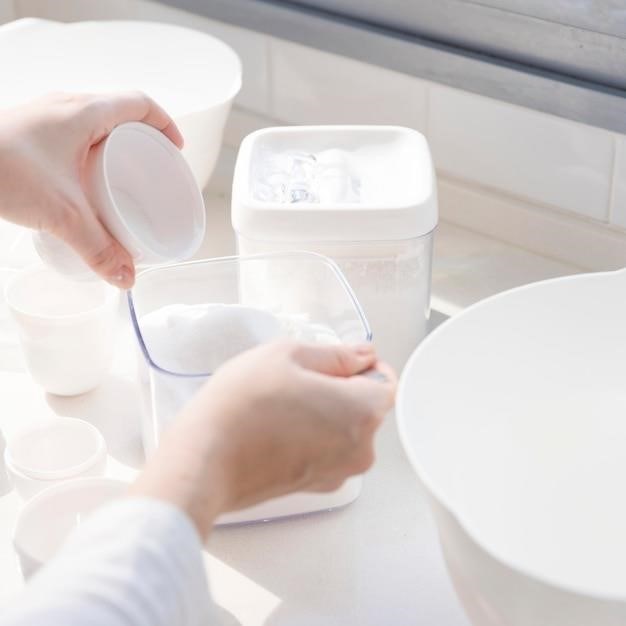Dr. Brown’s Bottle Sterilizer Manual⁚ A Comprehensive Guide
This manual provides comprehensive instructions for using Dr. Brown’s bottle sterilizers‚ covering various models. It details operation‚ cleaning‚ troubleshooting‚ water usage‚ sterilization times‚ safety precautions‚ compatibility with different bottle types‚ and warranty information. Consult this guide for optimal performance and safety.
Understanding the Dr. Brown’s Sterilizer Models
Dr. Brown’s offers a range of bottle sterilizers designed for various needs and preferences. The Deluxe Bottle Sterilizer‚ a popular choice‚ features electronic controls and a one-button operation for convenient steam sterilization of up to six bottles simultaneously. It includes a removable basket for easy loading and unloading and an accessory tray for sterilizing smaller items like nipples and pacifiers. The included tongs facilitate safe removal of hot bottles. Other models may include microwave sterilizers‚ offering a quicker sterilization option for smaller loads‚ ideal for on-the-go situations or quick clean-ups. Some models may also combine sterilization and drying functions in a single unit‚ streamlining the process. Always refer to the specific model’s instructions for detailed operating procedures and safety precautions. Understanding the differences helps you select the sterilizer best suited for your requirements and ensures you utilize its features effectively and safely.
Operating Instructions⁚ A Step-by-Step Guide
Before first use‚ wash all sterilizer parts thoroughly with hot‚ soapy water. For steam sterilizers‚ ensure the steam plate is correctly positioned and secured. Add the recommended amount of water to the designated area; this quantity varies depending on the model. Place bottles and accessories in the designated trays‚ ensuring proper placement for even steam distribution. Close the lid securely. Activate the sterilizer according to the model’s instructions; this may involve pressing a button‚ setting a timer‚ or plugging it into an electrical outlet. For microwave sterilizers‚ follow the microwave’s instructions and the sterilizer’s specific power settings. Once the cycle is complete‚ allow the sterilizer to cool slightly before carefully opening the lid. Use the included tongs to remove hot items to avoid burns. Always follow the specific instructions provided with your model for optimal results and safety. Never attempt to open the lid while the unit is operating or immediately after it switches off due to the risk of scalding steam.
Cleaning and Maintenance Procedures
Regular cleaning is crucial for maintaining hygiene and extending the lifespan of your Dr. Brown’s bottle sterilizer. After each use‚ allow the sterilizer to cool completely before cleaning. Unplug the unit from the power source if applicable. Wash all removable parts‚ such as trays‚ baskets‚ and the lid‚ with hot‚ soapy water. A soft sponge or non-abrasive brush can be used to remove any milk residue or mineral deposits. Rinse thoroughly and allow all parts to air dry completely before storing. The sterilizer’s interior should be wiped clean with a damp cloth. Avoid using harsh chemicals or abrasive cleaners‚ as these could damage the sterilizer’s surface. For models with a heating element‚ regularly check for mineral buildup. Descaling may be necessary; consult the specific instructions provided with your model for details on descaling procedures. This often involves using a vinegar and water solution. Always ensure the sterilizer is completely dry before storing to prevent mold or mildew growth. Proper cleaning and maintenance will ensure your Dr. Brown’s sterilizer remains efficient and safe for your baby’s bottles and accessories.

Troubleshooting Common Issues
If your Dr. Brown’s bottle sterilizer isn’t functioning correctly‚ check the following⁚ Ensure the unit is properly plugged in and the power switch is turned on. Verify that sufficient water has been added to the reservoir; insufficient water can lead to malfunction. Check the water level regularly and refill as needed‚ following the instructions for your specific model. If the sterilizer isn’t heating up‚ ensure the heating element is clean and free of mineral deposits. Descaling may be necessary if mineral buildup is present. Refer to the descaling instructions provided with your model. If the sterilizer isn’t sterilizing effectively‚ ensure all items are properly placed in the sterilizer and that the cycle is running for the correct duration. Overcrowding can hinder the steam’s ability to reach all items. If the sterilizer is making unusual noises‚ check for any obstructions or loose parts. If the problem persists after checking these points‚ consult the warranty information or contact Dr. Brown’s customer support for assistance. They can provide further troubleshooting steps or arrange for repairs if necessary. Remember to always unplug the unit before attempting any internal inspections or cleaning.
Water Usage and Refilling Instructions
The amount of water required for your Dr. Brown’s bottle sterilizer varies depending on the specific model. Always refer to the instructions included with your particular sterilizer for the precise water level. Generally‚ you’ll need to add clean water to the designated reservoir or chamber. Using distilled water is recommended to prevent mineral buildup on the heating element‚ which can impact performance over time. Never overfill the reservoir‚ as this could lead to malfunction or damage to the unit. After each sterilization cycle‚ the water level will be reduced. Before starting a new cycle‚ check the water level and refill if necessary. The frequency of refilling will depend on how often you sterilize bottles. It is crucial to ensure the water reservoir is filled before each use to prevent damage to the heating element. Regularly check the water level and top it up as needed‚ even if you are not running a sterilization cycle‚ to avoid the risk of overheating or malfunction. Always use fresh‚ clean water each time. The water should be at room temperature‚ avoiding extremely hot or cold water.

Sterilization Time and Settings
Sterilization time for Dr. Brown’s bottle sterilizers varies depending on the model and the type of sterilization (steam or microwave). Consult your specific model’s instructions for accurate timings. Generally‚ steam sterilizers require a cycle of approximately 10-12 minutes to effectively eliminate 99.9% of harmful bacteria. Microwave sterilizers may have shorter cycles‚ but always adhere to the manufacturer’s recommended time to ensure complete sterilization. Do not interrupt the sterilization cycle prematurely‚ as this could compromise the effectiveness of the process. Over time‚ mineral deposits can affect the efficiency of the heating element and increase sterilization times; regular descaling is recommended. If you notice the sterilization time is significantly longer than usual‚ this could indicate a need for cleaning or descaling. The sterilizer may have different settings for various types of items (bottles‚ nipples‚ pacifiers). Select the appropriate setting to ensure thorough sterilization for each item. Always verify the sterilization is complete before removing items to prevent accidental burns. The device may have an indicator light or sound to signal the end of the cycle.
Safety Precautions and Warnings
Always unplug the sterilizer from the power outlet before adding water‚ cleaning‚ or performing any maintenance. Never immerse the sterilizer in water or any other liquid. Avoid touching hot surfaces‚ including the top cover‚ main cover‚ trays‚ and heating element‚ during or immediately after use. Allow sufficient time for the sterilizer and its contents to cool completely before handling to prevent burns. Keep the appliance and its cord out of reach of children; this appliance is not intended for use by children. Close supervision is necessary when used near children. Ensure adequate ventilation around the sterilizer to prevent overheating. Do not operate the sterilizer if it is damaged or malfunctioning. Always use the sterilizer on a stable‚ heat-resistant surface. Never leave the sterilizer unattended during operation. Before each use‚ inspect the sterilizer for any damage or wear. Do not use abrasive cleaners or scouring pads on the sterilizer. Follow the manufacturer’s instructions for cleaning and maintenance. If using distilled water‚ it will prevent mineral buildup‚ but regular descaling is still needed for the best performance. Never freeze glass containers in the sterilizer‚ as this could cause breakage.
Using the Sterilizer with Different Bottle Types
Dr. Brown’s sterilizers are designed to accommodate a variety of bottle types and sizes‚ including both narrow and wide-neck bottles. Refer to the diagrams within your specific model’s instruction manual for suggested layouts and placement within the sterilizer basket. For Dr. Brown’s bottles and parts‚ follow the illustrated layout options provided. Ensure that bottles and components are arranged to allow for even steam circulation. Overcrowding the sterilizer may hinder effective sterilization. When using standard-size bottles‚ carefully place them in the designated slots‚ ensuring they are secure and will not tip over during the sterilization cycle; If using bottles other than Dr. Brown’s‚ verify that they are compatible with steam sterilization and that they are placed appropriately within the sterilizer to ensure thorough cleaning. Always consult your specific sterilizer’s instruction manual for detailed guidance and recommendations based on your chosen bottle brand and size. Proper placement is crucial for optimal sterilization results.
Warranty Information and Customer Support
Dr. Brown’s offers a warranty on its bottle sterilizers‚ the specifics of which vary by model and region. Refer to your sterilizer’s packaging or the included documentation for complete warranty details‚ including duration and coverage of defects in materials and workmanship. Typically‚ the warranty does not cover damage caused by misuse‚ neglect‚ or unauthorized repairs. Should you encounter any issues with your sterilizer during the warranty period‚ contact Dr. Brown’s customer support for assistance. Their contact information‚ including phone number‚ email address‚ and potentially a website contact form‚ should be available on their official website or within the product packaging. When contacting support‚ provide the model number of your sterilizer‚ a description of the problem‚ and proof of purchase. Keep your receipt or proof of purchase readily accessible to expedite the warranty claim process if necessary. Dr. Brown’s customer service representatives are available to address your concerns and guide you through troubleshooting steps or the warranty claim process. Their goal is to resolve your issues efficiently and ensure your satisfaction.